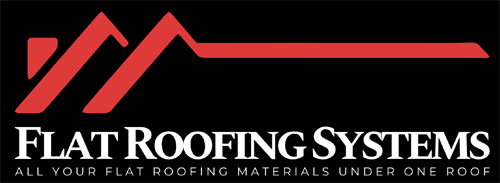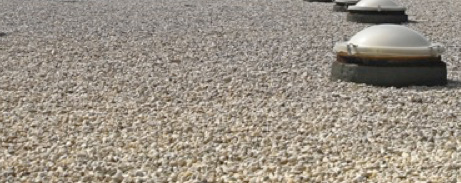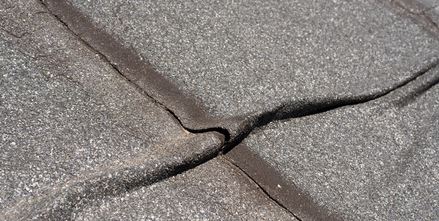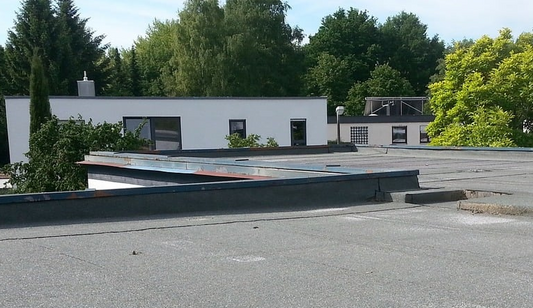Key Points
- EPDM roofing was introduced in 1962, revolutionizing durability and cost-effectiveness in the construction industry.
- Advancements in seaming and securement techniques since the 1980s have enhanced EPDM installation and longevity.
- Modern EPDM roofs utilize technology like 90-mil membranes and reinforced materials for superior puncture resistance.
- Drone inspections and high-resolution imaging have improved the safety, speed, and precision of EPDM roofing assessments.
- Future EPDM developments focus on increased weather resistance, eco-friendly materials, and extended roof lifespan.
Historical Overview of EPDM
EPDM roofing technology, first introduced in 1962, quickly became a game-changer in the construction industry.
You might find it fascinating that the origins of this material trace back to the late 1700s when natural rubber was first utilized. However, it wasn't until the 1960s that rubber found its way onto roofs, revolutionizing building coverings.
Originally developed by researchers at the Monmouth Rubber and Plastics Corporation in New Jersey, EPDM (ethylene propylene diene monomer) is a synthetic rubber crafted from ethylene and propylene, substances derived from oil and natural gases.
Its rise in popularity during the 1970s and 1980s stemmed from several key attributes.
You're looking at a material known for its exceptional resistance to environmental damage, which includes UV rays and severe weather conditions, thanks to its cross-linked molecular structure.
Not only was EPDM cost-effective, but its simplicity in installation made it a preferred choice among builders and contractors.
This era marked a significant shift in roofing practices, setting a new standard in durability and performance that reshaped expectations across the industry.
Advances in Seaming Technology
Advancing through the late 1980s, Carlisle innovated EPDM roofing with a specially designed Splice Wash and butyl-based White Splice Cement for seaming, remarkably enhancing seam durability in ponded water conditions.
You'd appreciate how these advancements revolutionized EPDM installations, setting new standards for seam strength and reliability, particularly in challenging environments.
Moving into the 21st century, in 2001, Carlisle took another major leap by introducing a tailored Splice Primer and double-sided White Seam Tape.
This innovation simplified the seaming process tremendously. You'd notice the ease of application that noticeably cut down on labor time and minimized inconsistencies in workmanship that were common with earlier methods.
Enhancements to Securement Methods
In the domain of EPDM roofing, securement methods have seen substantial enhancements since their inception. Initially, you might've found wood nailing strips being used, but these were prone to dry-rot and often pulled out over time.
By the mid-1980s, a shift occurred with the introduction of extruded rubber and plastic nailing strips, markedly improving weatherability and longevity.
Then in 1989, a game-changer was introduced by Carlisle: the RUSS (Reinforcing Universal Securement Strip) detail. This method uses fasteners and metal seam plates to secure the membrane, allowing the EPDM field membrane to run continuously into the angle change and up the wall.
This innovation not only provided a more secure and watertight roof system but also minimized workmanship inconsistencies.
Thanks to the RUSS detail, seam-related warranty claims have plummeted by 80%. This statistic isn't just impressive; it's transformative.
Today, your EPDM roofing benefits from continued advancements in materials and installation techniques. These developments guarantee that the roofing system you choose isn't only more durable but also remains effective for years to come, markedly reducing the likelihood of future complications.
Puncture Resistance Improvements
As the roofing industry evolved, so too did the technology behind EPDM membranes, specifically with regard to their puncture resistance.
Initially, you might've found the non-reinforced EPDM membrane quite common, particularly in ballasted systems.
But as you needed tougher solutions, the industry shifted towards the 1mm membranes, which offer improved puncture resistance.
In the mid-1980s, a significant leap was made with the introduction of internally reinforced EPDM sheets.
These sheets, which include a scrim, boosted puncture resistance by about 50%.
You'd notice that these sheets could stand up better to the environmental challenges and mechanical stresses typical of roofing applications.
Then, in 1996, another breakthrough occurred with the launch of externally reinforced fleece-backed EPDM.
This variant offered the highest puncture resistance among all EPDM membranes.
It's a great choice if you're looking for durability and a robust shield against punctures.
This advancement means you can now enjoy even greater protection for your roofing projects, ensuring a longer lifespan and reduced maintenance costs.
Evolution of Flashing Techniques
With the shift toward more durable materials, the roofing industry substantially improved flashing techniques, essential for preventing leaks where the roof meets other surfaces.
Initially, you might've seen flashings crafted from uncured Neoprene. However, this material was prone to UV damage, leading to cracks and crazing over time, compromising the integrity of roof joints.
By the mid-1980s, a pivotal shift occurred with the introduction of uncured EPDM for flashings. This change offered you better weather resistance, substantially extending the life of flashings.
But, it wasn't just about the material upgrades. In 1992, updates to wall and curb flashing details mandated the use of cured EPDM membrane, enhancing toughness and durability. This was vital for areas prone to mechanical stress or higher environmental exposure.
Moving forward to 2005, the development of prefabricated pressure-sensitive accessories like inside/outside corners, pipe boots, and pourable sealer pockets marked a leap in installation ease and overall roofing quality.
These innovations not only cut down your installation time but also markedly reduced potential errors, ensuring a more reliable, watertight seal.
This advancement not only secures longevity but also enhances adhesive properties, giving you peace of mind against water ingress.
EPDM Market Impact and Popularity
EPDM roofing membranes frequently stand out as the material of choice for architects, contractors, and facility managers, primarily due to their cost-effectiveness and superior durability.
Since their introduction in the 1960s, you've likely noticed their growing presence on commercial buildings, a badge of honor to their enduring appeal and performance.
When the Middle East oil embargo in the 1970s spiked asphalt roof prices and diminished their quality, EPDM's affordability and easy installation became even more attractive, boosting its market presence during the 1970s and 1980s.
You'll find that EPDM's appeal doesn't just lie in its economic advantages.
Its exceptional resistance to hail, UV rays, and other harsh weather conditions makes it a particularly reliable choice in climates that demand robust roofing solutions.
Over the years, enhancements to EPDM system components have only increased their value and functionality, ensuring that today's EPDM systems offer even greater durability and performance.
The continuous evolution of EPDM has allowed it to adapt seamlessly to changing market demands and requirements, further cementing its role as a preferred roofing solution.
It's clear that as you look towards future roofing options, EPDM remains a strong contender, promising ongoing reliability and innovation in roofing technology.
Current Trends in EPDM Roofing
Recent advancements in EPDM roofing technology highlight a substantial shift towards more sustainable and efficient building practices.
You'll find that today's EPDM roofs aren't just about covering buildings; they're about enhancing performance while being kind to the planet. With improvements in materials, these roofs now boast superior durability and weather resistance, making them ideal for low-slope and flat roofs.
You're also looking at systems that offer incredible benefits like exceptional hail resistance, UV stability, and enhanced weathering resistance.
This means you're getting a roofing solution that's not only cost-effective but also simple to install. Plus, the energy efficiency of these materials has seen a notable boost, reflecting in lower energy costs for you.
Moreover, the integration of technology like drones equipped with high-resolution cameras has transformed how roofing inspections are conducted.
You can now expect safer, quicker, and more precise inspections, ensuring that potential issues are caught early and addressed promptly.
Lastly, the ease of recycling EPDM materials has been a game changer.
This move towards more recyclable solutions markedly reduces waste and the demand for new resources, aligning with broader environmental goals. You're investing in a system that supports a sustainable future.
Future Directions for EPDM Technology
As we look ahead, you'll see EPDM roofing technology evolving to meet the growing need for environmentally friendly and energy-efficient solutions.
The material that's served as a reliable choice for decades isn't just standing still — it's moving forward, adapting to the demands of a more sustainable world.
You can expect to see significant enhancements that not only extend the life of your roof but also contribute positively to environmental conservation.
Here's what's on the horizon for EPDM roofing:
- Increased Durability and Weather Resistance: Future EPDM membranes are likely to be even more robust, capable of withstanding extreme weather conditions. This means less frequent replacements and repairs, saving you money and reducing material waste.
- Advanced Installation Techniques: The adoption of innovative installation methods and materials will streamline the roofing process, reduce labor costs, and minimize the risk of errors. You'll benefit from a roof that's installed quicker and lasts longer.
- Eco-Friendly Innovations: Manufacturers are set to ramp up the production of recyclable and reusable EPDM systems. You'll see a shift towards roofs that not only protect your home but also prioritize the planet.
With these advancements, you'll find that EPDM roofing continues to be an excellent choice for both performance and sustainability.
Rounding Up
As you've seen, EPDM roofing has come a long way. From its humble beginnings to the latest advancements in seaming, it's consistently evolved. Today, it stands as a popular choice due to its durability and cost-effectiveness. Moving forward, anticipate even more innovative improvements that will enhance its performance and environmental footprint. Keep your eye on EPDM; it's set to adapt and thrive in the ever-changing landscape of roofing technologies.




